Home & Living
Essay: When a Kitchen Renovation Means Starting From the Ground Up—Literally
Here’s the thing about old houses. If you watch enough home renovation television, you will be led to believe they are charming. Lies.
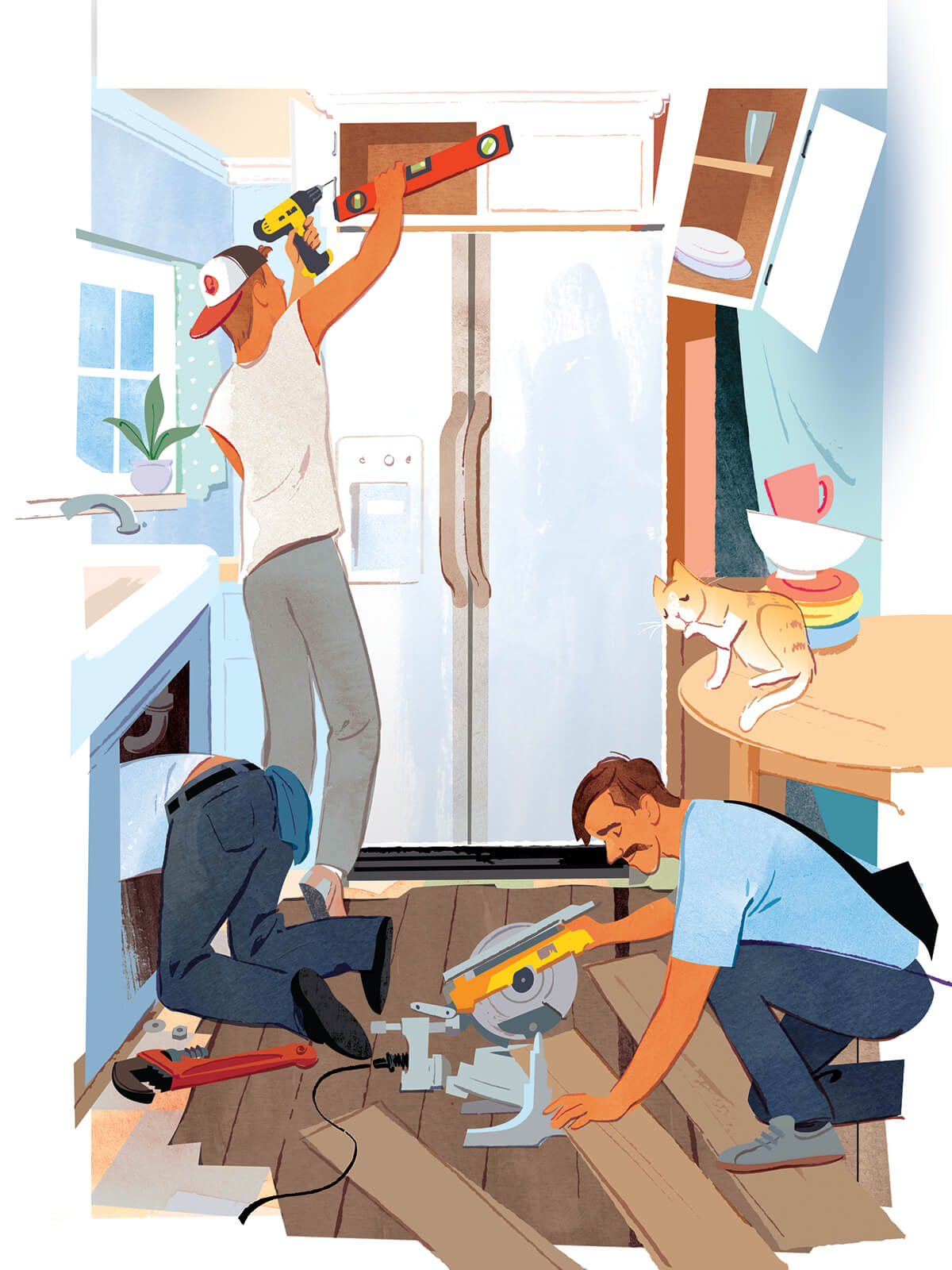
When I was a kid, my parents went to an auction and bought a pallet of bricks. We lived in a brick house, and they wanted to put in their own patio, but trouble arose getting the bricks home.
My mother would retell the story of how the car stalled when the trailer they were hauling got two flat tires up a steep hill, on a blind curve on Falls Road. Consternation, yelling, and threats of divorce ensued.
I’m reminded of this story as I stand in the cold warehouse at Second Chance with my husband, contemplating a pallet of hardwood flooring the size of a baby elephant that we intend to load onto my dad’s old trailer and haul back to Baltimore County for a kitchen remodel upon which we never intended to embark.
Last summer, we had a minor refrigerator-related flood that ended up causing a huge headache. Although the amount of water that got on the floor was relatively minimal, our ancient laminate floor was not properly installed, and the water was able to get underneath it.
The laminate buckled, insurance was contacted, a disaster company arrived and cut a huge swath of the floor away—down to the original 1850s subfloor—and installed industrial-grade drying fans that whirred away at such a clip we got an alert from the power company that we were using an exponentially larger amount of electricity than usual.
When everything was dry and the disaster guys packed up and gone, the long slog with the insurance company began. Six months later, they coughed up a check for the floor…and only the floor. This was not particularly helpful as the problem was no longer the floor—it was what was under it.
When the disaster company began cutting away the laminate it rapidly turned into an archeological exploration. The laminate sat on top of white vinyl, which was on top of a subfloor, which was on top of linoleum, and so on. By the time we got to the true subfloor, we’d gained about an inch of height in the room. All the trim around the walls would need to be redone and the cabinets reset.
Worse, the subfloor was in terrible shape—dry rotted in some places and cut away and shoddily repaired decades ago in others. The insurance check, when it arrived, was going to be a drop in the bucket. And we had no choice but to fix the issues in this old house.
Here’s the thing about old houses. If you watch enough home renovation television, you will be led to believe they are charming. Lies. Living in an old house is like taking care of a geriatric patient: There is always something wrong, or something about to go wrong, and that something wrong may or may not be related to a pre-existing condition, but you can’t be sure without an expensive exploratory procedure.
Example: Ever since we bought our house five years ago, the kitchen floor has had a bit of a spring in its step. This is because our house is built on a support of trees. Note I did not say “beams.” Beams imply trees that have been hewn into something with a structural appearance. No. Someone cut down some trees 200 years ago, put them in the ground, and built our house on top of them. They still have bark on them in places.
They are solid enough, with one big caveat: You can’t have a level floor on trees, so parts of the floor have always been a bit wobbly, unnervingly so, like an indoor trampoline.
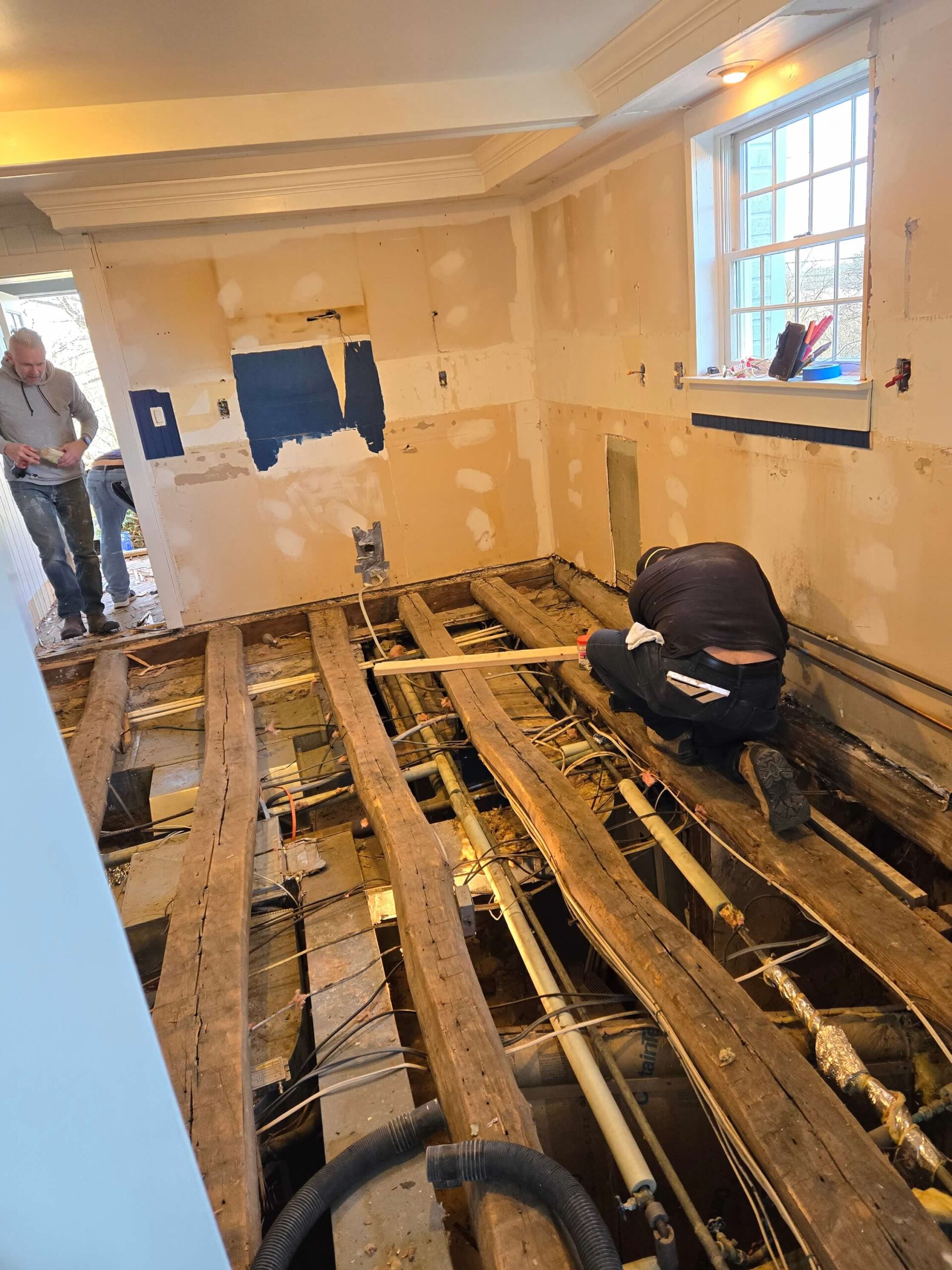
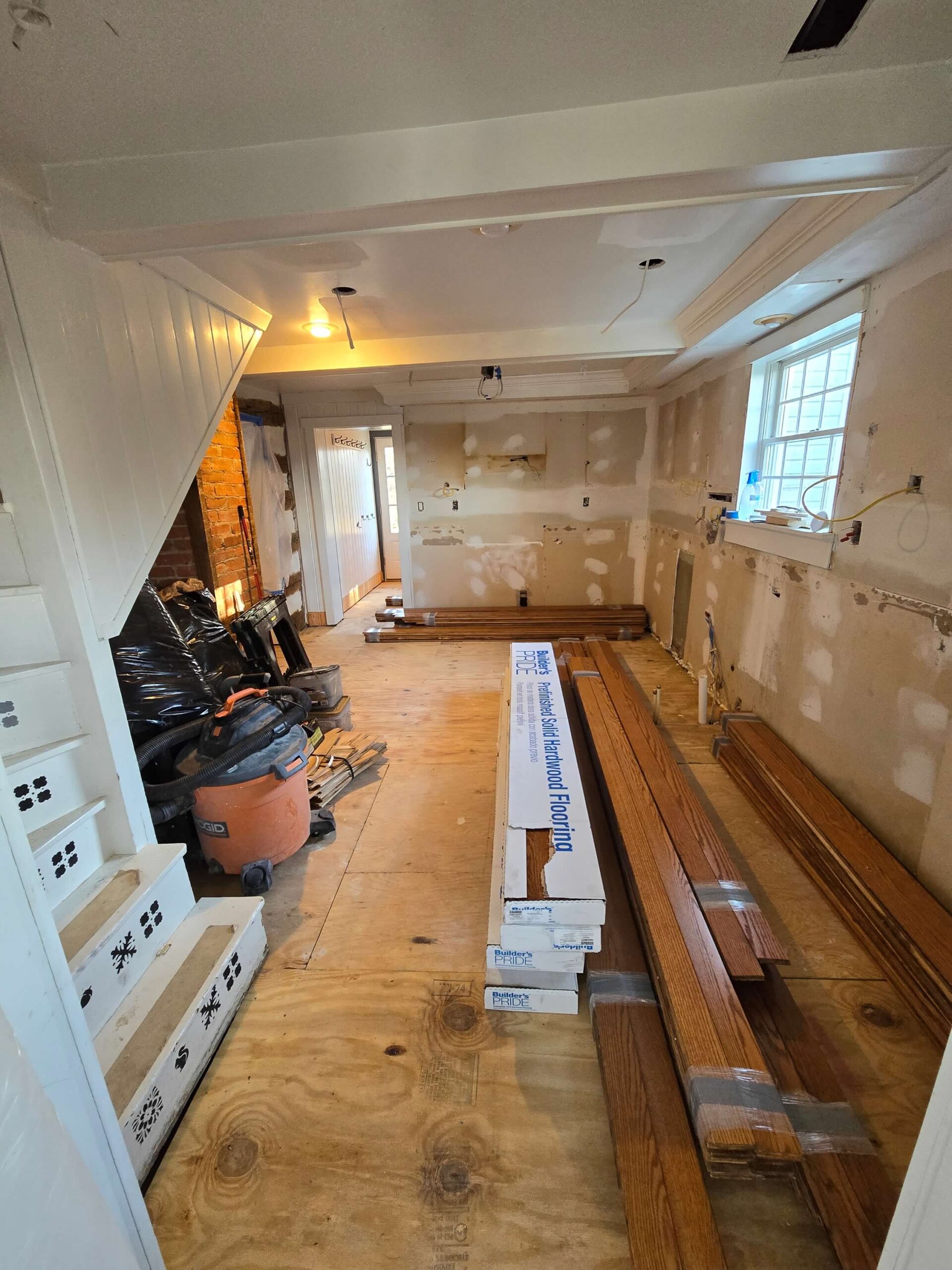
To replace the floor properly would require some structural support and no small amount of expert leveling. We had no money and no plan, and the situation was literally deteriorating. It was like every appliance and structure in the kitchen realized things were headed south and decided they, too, may as well throw in the towel.
One of the upper cabinets started to pull away from the wall. And our refrigerator, which had been limping along, blew a gasket and the drawer tracks cracked so they would no longer run smoothly in and out. To add insult to injury, we noticed one day that its doors weren’t staying closed. Reason? The front wheels had sunk through the dry rotted subfloor.
There was no love lost between me and our minuscule side-by-side fridge. It was so small you could store a head of lettuce, a gallon of milk, and a stick of butter in it and little else. It was not even remotely practical for a family. But our kitchen is small. People have walk-in closets bigger than our kitchen, which is deeply ironic, as my husband and I are both huge cooks.
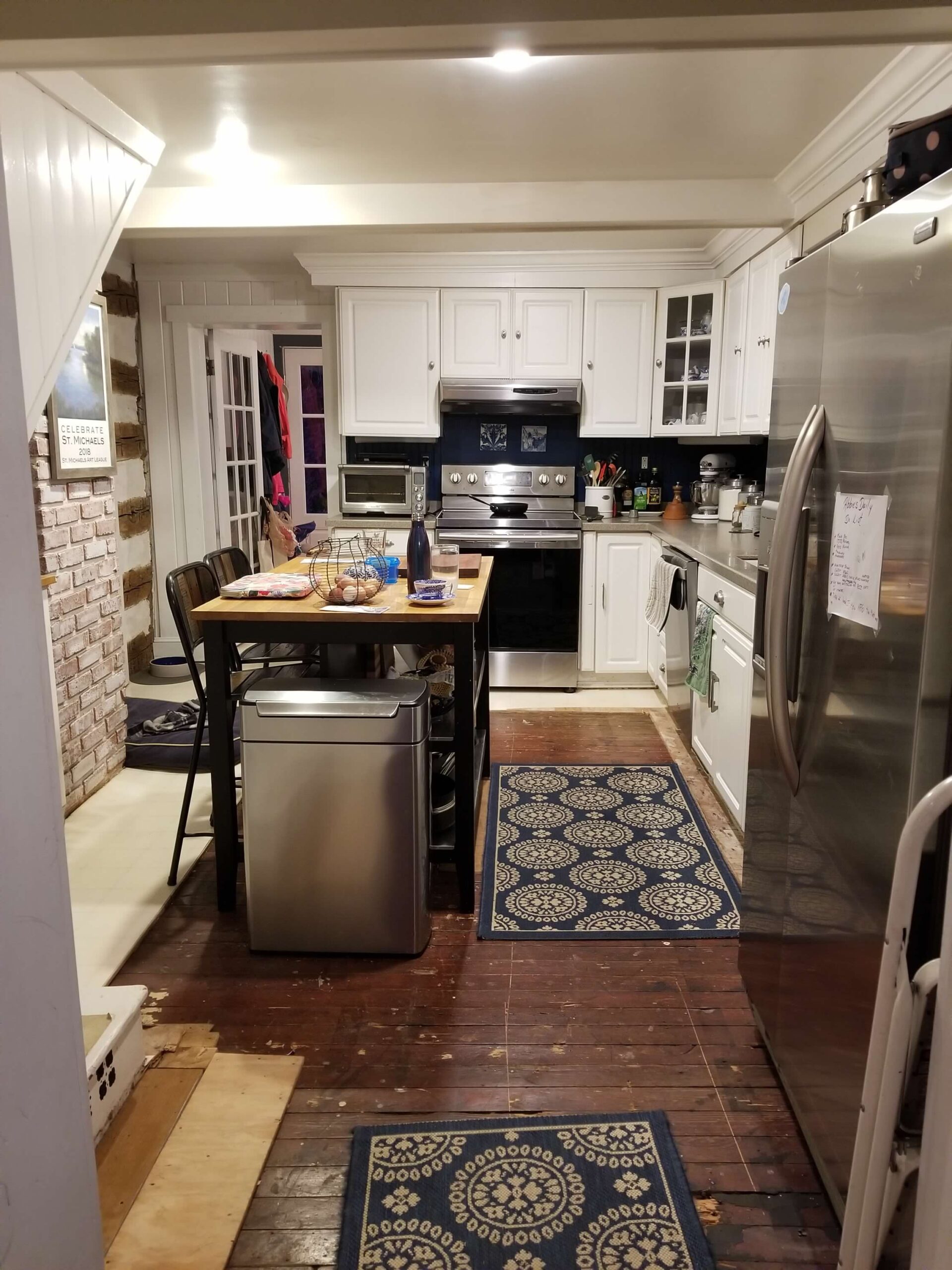

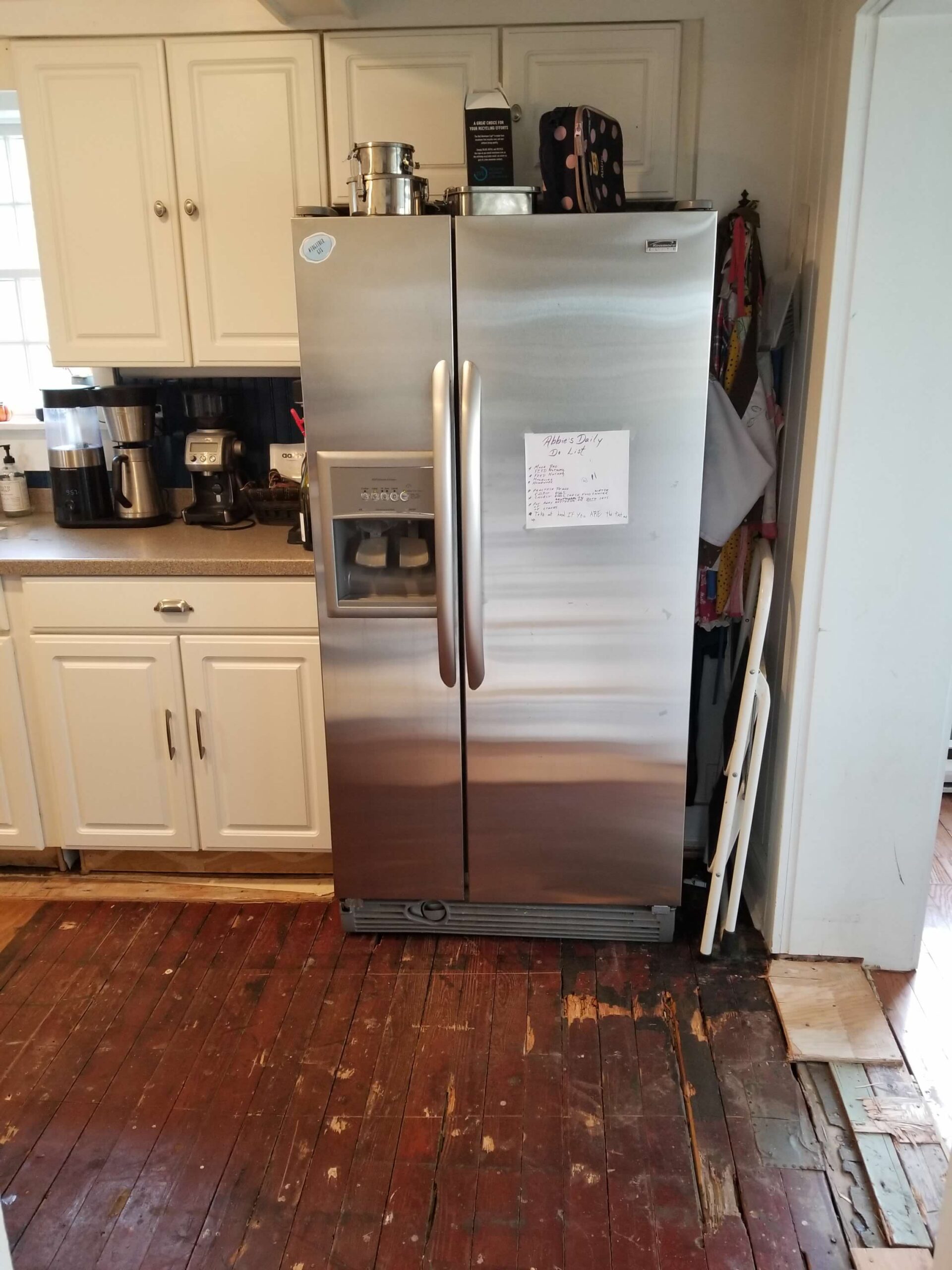
I’ve been fantasizing about new fridges for years, but even the smallest on the market now is about a quarter inch too big to fit in the opening we currently have. A quarter inch doesn’t sound like much—if your hair is a quarter inch too long, you trim it off; if your dress is a quarter inch too tight, you pull on Spanx. There are no Spanx for appliances. If the fridge is a quarter inch too big, you need a sledgehammer and a contractor.
We were now pulling the thread on the proverbial sweater. Replace the floor, replace the cabinets, open a space for the fridge, replace the countertop. And so on. It became hard to remember the trickle of water that generated this geyser.

This project was getting less and less Joanna and Chip Gaines’ Magnolia Home and more Tom Hanks and Shelley Long’s The Money Pit with each passing moment.
Contractors were duly contacted. Most took one look at the house and said “no thank you” or offered an estimate that would have made it more plausible for us to buy a new house. Finally, we found an intrepid contractor with experience working on old homes.
Through prayer, credit cards, and crowdfunding with generous relatives, we cobbled together some funds, cabinets were ordered, a counter top was selected, and hardware was chosen from Etsy. I ordered the fridge of my dreams, and such was my joy at finally having a functional, normal refrigerator, I couldn’t get upset that it was installed in our living room, the only place it would fit while the kitchen was ripped apart.
Demo day was scheduled. I moved the entire contents of the kitchen onto our dining room table. The dining room looked like we were hosting a yard sale and there was now a coffee maker on our living room end table, but things were finally moving forward.
The first issue arose around, shocker, my nemesis, the fridge. As soon as we moved the old one out and disconnected the line to the freezer, water began leaking out of the gate valve at a rapid clip. Cue the plumber. This project was getting less and less Joanna and Chip Gaines’ Magnolia Home and more Tom Hanks and Shelley Long’s The Money Pit with each passing moment.
Demo day—or as liked to call it “the opening of Pandora’s box”—arrived. From my place in my home office, it sounded like they were dismembering the entire house, which, in a way, they were. Around lunchtime, when the sound of saws and crowbars silenced, I took a peek behind the plastic sheeting covering the doorways. The floor was completely gone, exposing the original 1850s beams and, below, our cellar. Then I noticed a little sliver of daylight visible through the floor.
“What’s that?” I asked. “That,” said the contractor, “I want to talk to you about.”
For years we’ve had trouble with the pipes in the kitchen freezing. (The year this happened on Christmas Eve when we had a house full of guests and were hosting 20-plus people for Christmas dinner is a memory that still stings.) Well, it’s little wonder the pipes were constantly frozen as we now know that part of the plumbing was outside the foundation wall. I could see it there, the under-the-sink plumbing, basking in the sunlight of a cold February day. Cue the plumber, part II.
Working in an old house, there are no perfect solutions, only creative work-arounds. One was found for the plumbing and now our pipes are cozy and warm indoors where they belong. We also discovered that one of the beams had come away from its footing, which was causing that trampoline effect on the floor. Stabilized, we would be able to walk across the kitchen without needing sea legs.
But oh, the kitchen floor. Another misleading proposition of home remodeling is reclaimed wood. Every design show loves reclaimed wood. The reality is not so glamorous. Wood is a living thing. It warps, expands, contracts, and molds itself to its surroundings so when you pull it out of one home and put it in another you will never have perfection.
Never ones to let the perfect get in the way of the good, we were thrilled to salvage our wood flooring from Second Chance—saving trees, space in the landfill, and a tremendous amount of money—but it did mean the crew laying down the floor had to meticulously clean and match each piece in a way that would be unnecessary with new flooring from a manufacturer. Once the floor was finished it looked beautiful, but I think the contracting crew left with a massive headache.
The cabinets arrived and more “interesting” issues arose. The corner of the room, for example, did not make a 90-degree angle, which required the installation of a system of shims and meant more headaches for the contractors, who were now attached to their levels as if they were some sort of third arm. Often, I would hear the contractor telling the crew that the goal was “flat not level,” as achieving perfect lines in this house was out of the question.
But finally, all was installed but the counter. That installer, who was also responsible for the sink, arrived and took meticulous laser measurements, and then began the long wait for fabrication. Meanwhile, washing dishes in the bathtub and making scrambled eggs on the grill outside was getting tiresome.
The day finally came for the counters to be installed and then everything happened all at once. The counter and sink went in, appliances were reinstalled, final paint and touch-ups took place, and then—blissful silence.
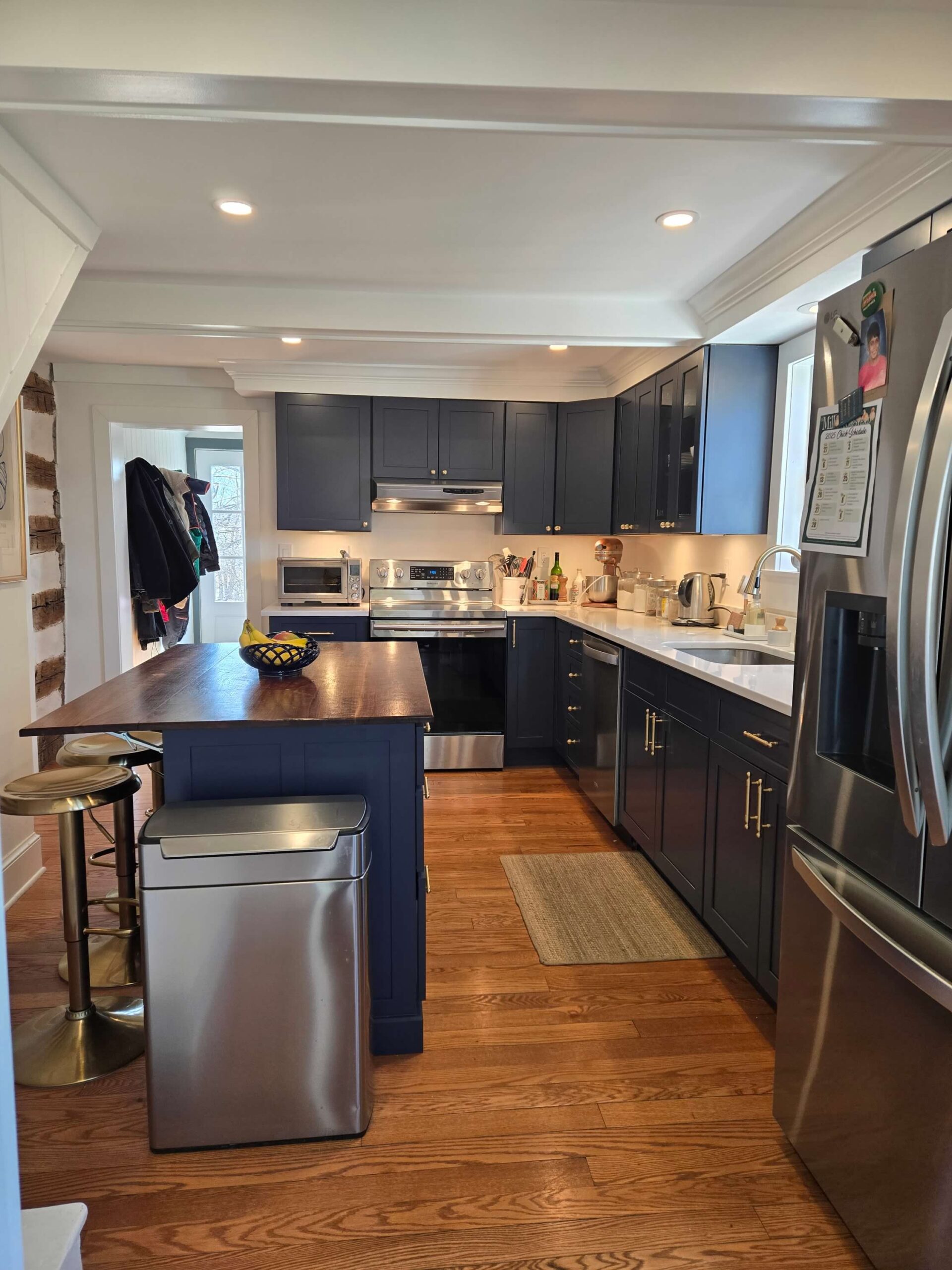
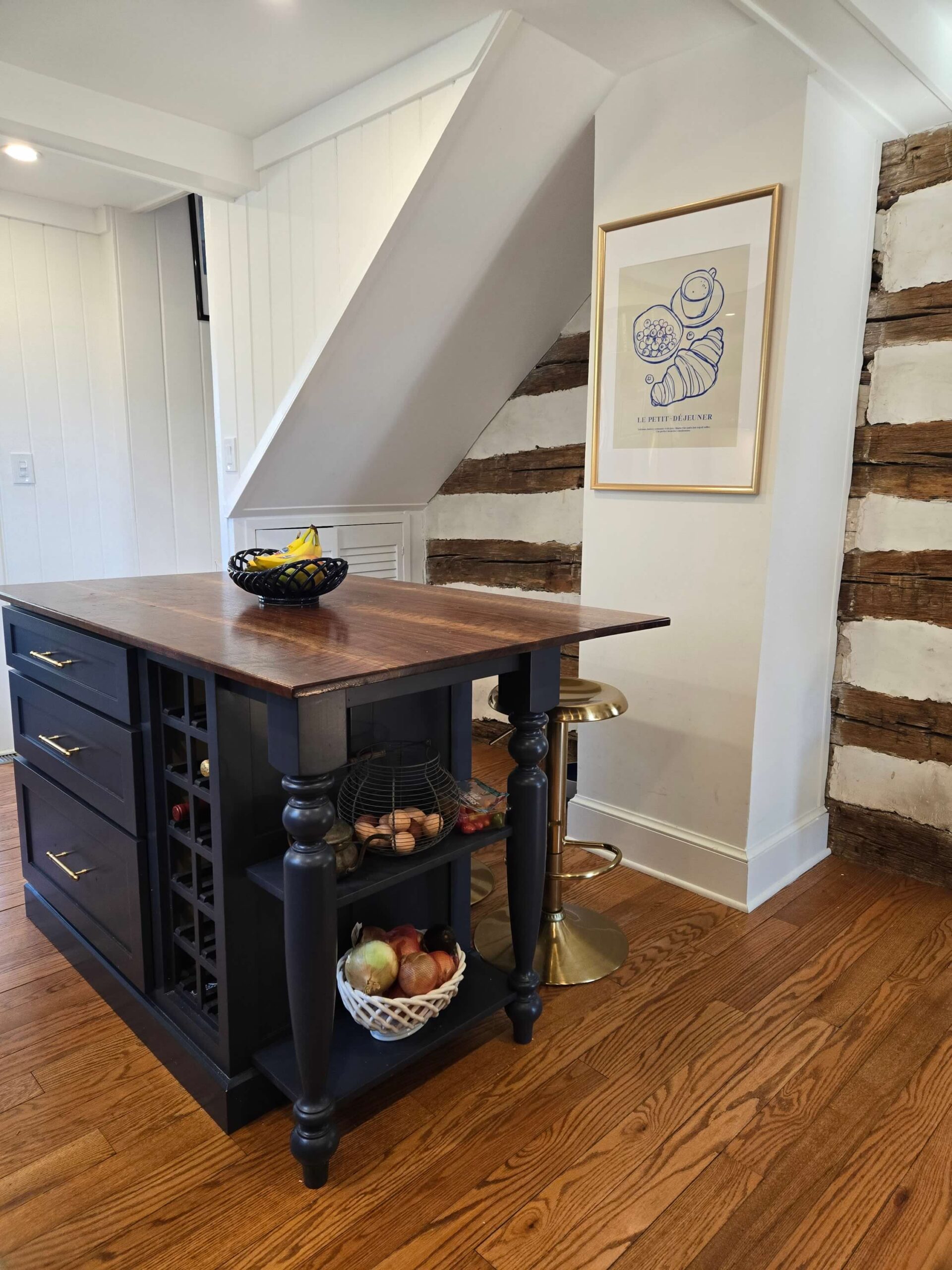

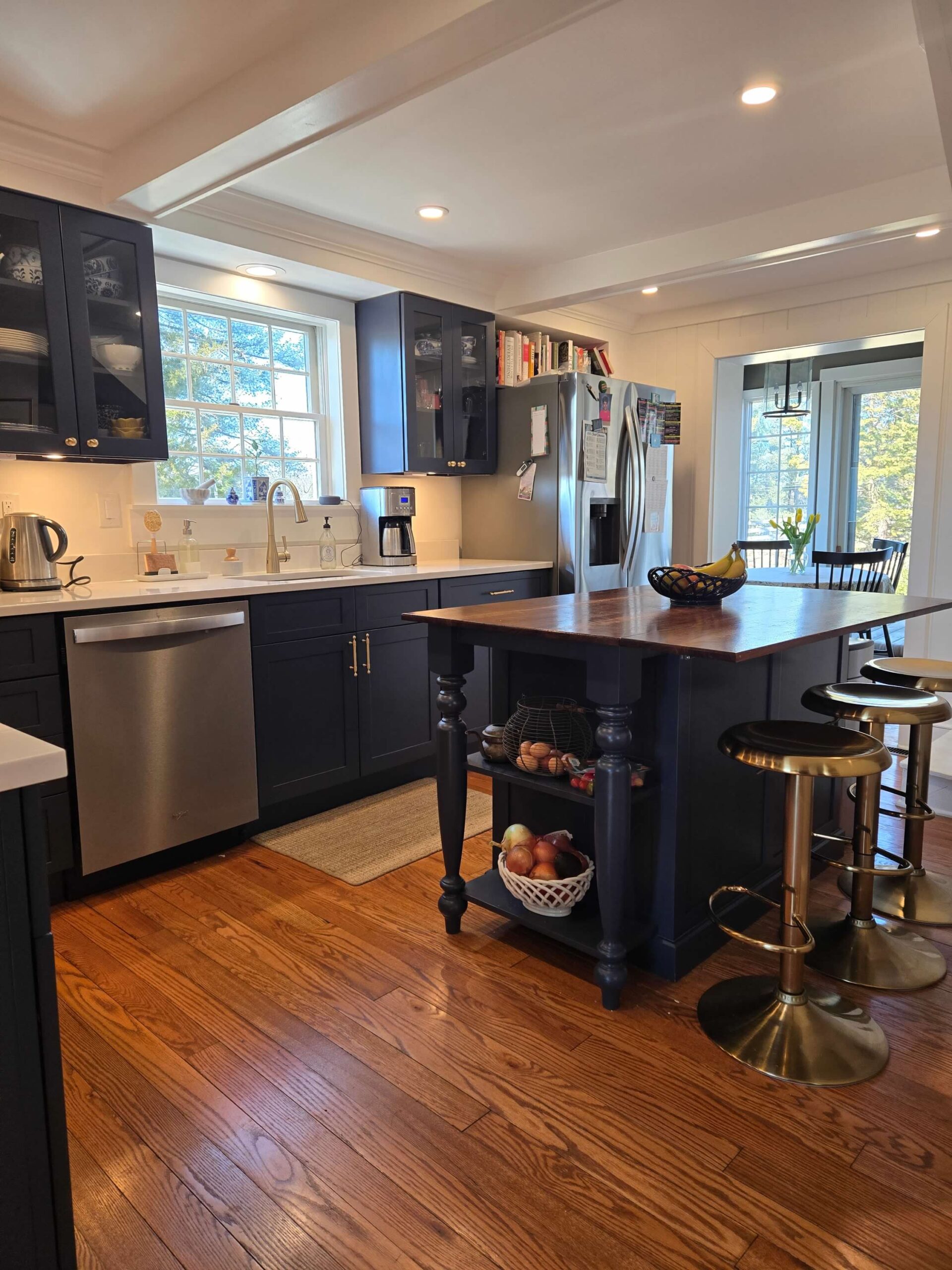
The saws, the hammers, the nail guns, the crew member who started every day singing “This Is How We Do It” by Montell Jordan—just packed up and left, leaving a new kitchen in their wake.
While we never expected to embark on this expensive adventure, the final result is stunning. Having the opportunity to design every inch of a space from the ground up, I was able to get the kitchen of my dreams, and one that functions well despite its small size.
And we stared down our old house with all its quirks and survived to tell the tale. So maybe it’s time to update that master bathroom…